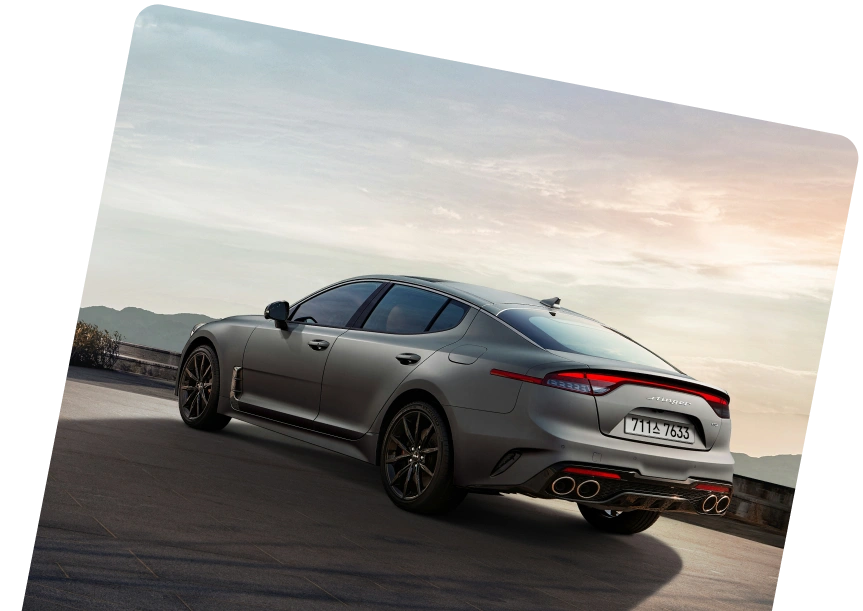The market is booming with small SUVs, with brands competing fiercely for the top spot. If you’re considering a Volkswagen and have to choose between the two standout models — the T-Roc and the T-Cross — how do you decide which one suits you best?
T-Cross is based on the VW Polo, so it’s only natural that it’s compact and perfect for city driving. It was launched in 2018 and is Volkswagen’s smallest SUV. The T-Roc is based on the VW Golf, so it offers more space and a sportier look. It was introduced in 2017 and falls between the T-Cross and the bigger Tiguan.
This guide will help you decide which SUV is the best fit for you by comparing their size, features, and overall style.
Contenders’ prices

T-Cross
A new Volkswagen T-Cross is priced at over £27,000, but you can find it used for around £13,000. As Volkswagen’s smallest SUV, it offers good value with its recently updated interior.

T-Roc
On the other hand, the Volkswagen T-Roc costs over £28,000, with a used price of £16,000. Known for its comfort and practicality, the T-Roc is a strong contender in the small SUV category for just a slight price bump.
Engines
With the T-Cross, the base 1.0 TSI 95, 1.0-litre petrol engine with 94bhp has a five-speed manual transmission. There’s also a more powerful 1.0 TSI engine with 113bhp, which comes with a six-speed manual gearbox, but it can be upgraded to a seven-speed dual-clutch auto for an extra fee. Finally, the 1.5-litre TSI 150 petrol engine comes with automatic transmission.
The T-Roc’s entry-level engine, the 1.0 TSI 110, is a 1.0-litre three-cylinder unit with 109bhp. If you’re after a bit more power, the 1.5 TSI 150 offers 148bhp. If you choose the Style trim or higher, you can opt for the 2.0 TSI 190 engine, which comes with 4Motion four-wheel drive.
For diesel options, the 2.0 TDI 115 provides 113bhp, while the 2.0 TDI 150 offers 148bhp and is offered with an automatic transmission and all-wheel drive.
Styling and interior
Both cars have similar looks because they’re from the same company and are based on the same design philosophy. Volkswagen has made them modern, with well-placed SUV styling cues. The T-Cross has a distinct SUV style, even though it’s small, and the T-Roc has a tougher look with a roomier interior. The T-Roc’s interior quality was criticised at first but has been improved in the 2022 model.
The VW T-Roc looks like a taller Golf, which is a good thing since the Golf is a great-looking car. The T-Cross, on the other hand, takes after the Polo but has a more grown-up look. If you want to add a unique touch to your T-Cross, you can opt for the Makena Turquoise Metallic, Reef Blue Metallic, or Syringa Violet colours as an optional extra.
While opinions on design vary, both the T-Cross and T-Roc are attractive options for small SUVs. Both models are sleek and fit well in city settings. They aren’t too rugged, so they look appropriate for everyday driving, like school runs or commutes.
Practicality and interior space
These cars may not be the biggest, but they offer more than enough room inside. The T-Roc has a taller roofline, so taller passengers should fit comfortably in both the front and rear seats.

T-Cross
When it comes to cargo, both cars are well-suited for family outings or large shopping trips. The T-Cross’s boot is 385 litres, and it expands to 1,281 litres with the rear seats folded flat. It also features a sliding rear seat, which allows you to adjust for more legroom or extra boot space. The T-Roc offers a slightly larger 445-litre boot that grows to 1,290 litres.

T-Roc
Both models accommodate up to five people, but it’s better to limit longer journeys to four passengers for maximum comfort.
Driving performance
Both cars have the same turbocharged petrol engine and are very similar in acceleration. The lighter T-Cross goes from 0-60 mph in 11.1 seconds, just ahead of the T-Roc at 11.2 seconds, even in very wet conditions. Official Volkswagen numbers show the T-Cross at 10.0 seconds and the T-Roc at 10.1 seconds for the 1.0 TSI 115 model. Both cars handle motorway speeds well and have enough power for quick overtaking.
Interestingly, the T-Roc is one of the few SUVs available as a convertible, so the open-top experience will be perfect for those who enjoy the feeling of the wind while driving.
Handling and steering
Both cars are easy to drive, with responsive steering that gets firmer as you go faster and take on turns, so you feel more in control. They also offer good grip and steady handling. The T-Cross leans a bit more in corners, which feels slightly top-heavy, and the T-Roc feels more nimble and fun.
Driving
The T-Cross rides well by small SUV class standards, even with its slightly larger 17-inch wheels, but the T-Roc stands out overall. Its suspension handles bumps more gently, particularly at low speeds with the 16-inch wheels, and feels more stable on the motorway.
Refinement
The T-Roc’s six-speed gearbox shifts smoothly and keeps the engine quieter on the motorway. It also produces less wind and road noise. The T-Cross’s five-speed gearbox is a bit rougher, with more thrum from the engine.
Technology and equipment
Both models are equipped with a variety of standard features. The T-Cross includes an eight-inch touchscreen media system that works with Apple CarPlay and Android Auto, multiple USB ports, and wireless charging. It also offers keyless access, Light Assist for headlights, and an optional Beats sound system.
The Volkswagen T-Roc is more or less the same, except for the sporty R-Line, which comes with a stylish appearance and a fully digital dashboard. The latest T-Roc also offers great connectivity with We Connect Plus, where you can stream music, listen to internet radio, and use podcasts with its built-in Wi-Fi that supports up to eight devices.
Driver assist technology includes parking sensors and assist, adaptive cruise control, proximity detection, driver profile settings, road sign recognition, traffic congestion assist, and more. These features are mostly found on newer models. If you’re looking at used cars, be sure to check exactly which ones have the extra gear.
Safety and reliability
Both the T-Cross and T-Roc achieved five-star ratings in Euro NCAP crash tests, thanks to their excellent occupant protection for both adults and children. Regarding specific safety features, both cars come with similar tech, such as auto collision braking, rear cross-traffic alert, lane-keeping aid, and more.
It’s worth noting that the T-Cross was tested more recently. So, it performed slightly better overall compared to the T-Roc, whose rating has become outdated due to the stricter testing standards introduced after its 2017 assessment. However, the T-Roc had a slight edge in protecting rear-seat children, as it scored 1% higher in that area.
Both models are known for their dependability because they use many parts found in other Volkswagen Group cars, like the Polo, Golf, and SEAT Ibiza. Because of this, maintenance and repairs are easier to keep up with.
Running costs
The T-Cross is generally cheaper to insure and more fuel-efficient. According to the claimed fuel consumption, it achieves up to 50.2 mpg with its TSI 115 engine, compared to the T-Roc’s 49.7 mpg. In practical tests, the T-Cross also outperforms and delivers 42.1 mpg versus the T-Roc’s 40.1 mpg.
However, the T-Roc tends to retain its value marginally better. On average, it will cost £100 less than the T-Cross over three years when considering all ownership expenses. You can also get a T-Cross in a higher trim level and still save £700 compared to the cost of a basic Volkswagen T-Roc.
Dimensions

VW T-Cross:
- Length: 4,110 mm
- Width: 1,760 mm
- Height: 1,584 mm

VW T-Roc:
- Length: 4,236 mm
- Width: 1,819 mm
- Height: 1,573 mm
The Volkswagen T-Cross is more compact, so it’s easier to handle in urban environments. In contrast, the T-Roc is slightly larger, with more interior space and a more commanding presence on the road.
Who is the Volkswagen T-Cross for?
The Volkswagen T-Cross models are for those who need a compact SUV that’s practical and family-friendly. Its taller design and elevated position behind the wheel appeal to young families and older drivers who value comfort and ease of access. It’s perfect for city driving, short trips, and family outings.
Who is the Volkswagen T-Roc for?
The larger T-Roc is perfect for those who want a stylish, sporty SUV with extra space. As for specific owner categories, it’s ideal for small families or active individuals who need a versatile vehicle for city driving and weekend trips.
Verdict for the Volkswagen T-Cross vs. T-Roc: Which should you buy?
Both the T-Cross and T-Roc are great small SUVs, each with its own benefits. The smaller T-Cross is smart inside, has good space for tall passengers, and is more affordable. On the other hand, the T-Roc has a larger cargo space, is quieter, and offers a more engaging driving experience on curvy roads. It also offers a more comfortable ride than many other small SUVs.
If you’re looking for something a bit more upscale with a better interior and a sportier drive, the T-Roc is the way to go. It’s larger and more powerful, perfect for those who need extra space and enjoy longer trips.
In the end, both are solid choices.







